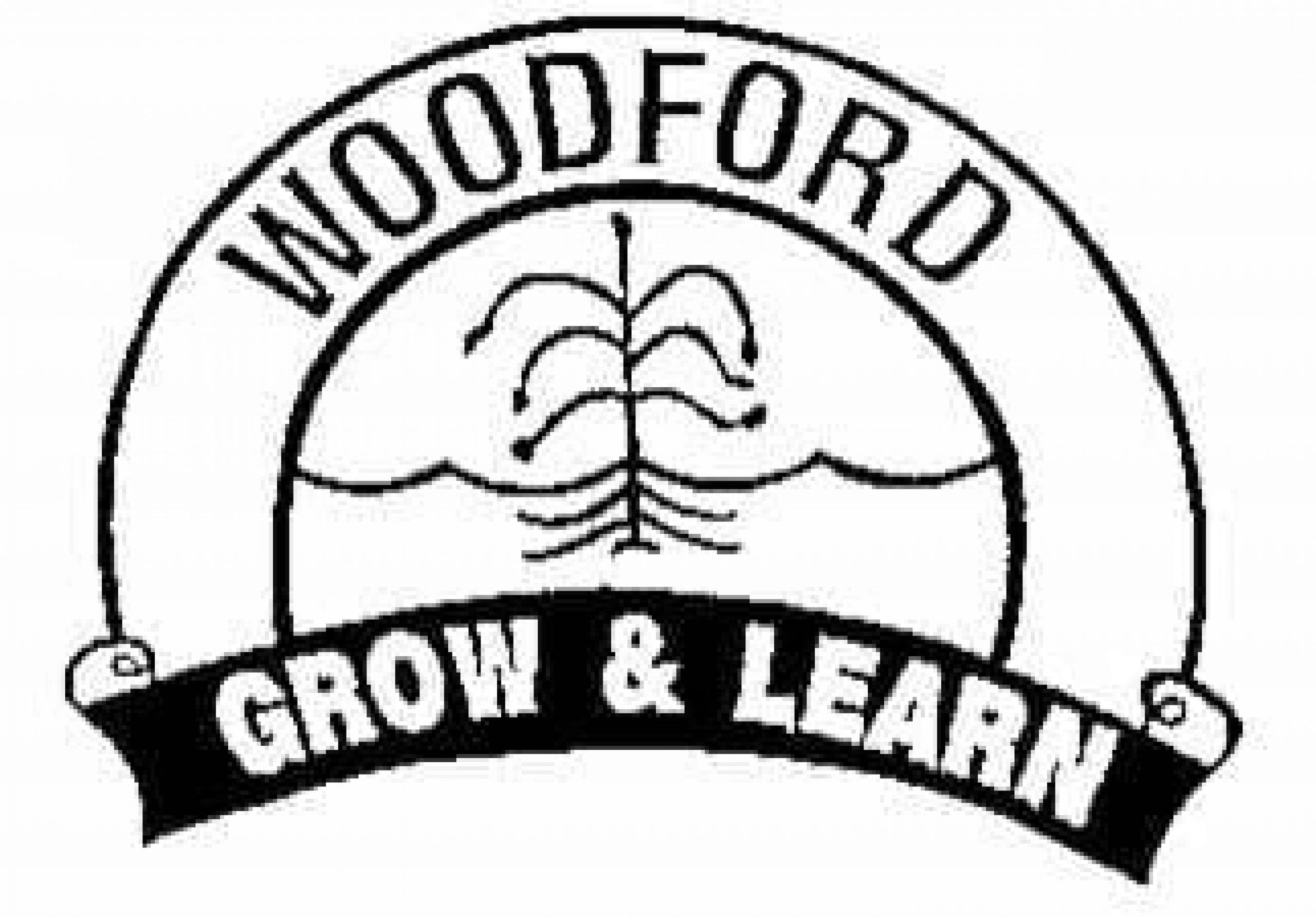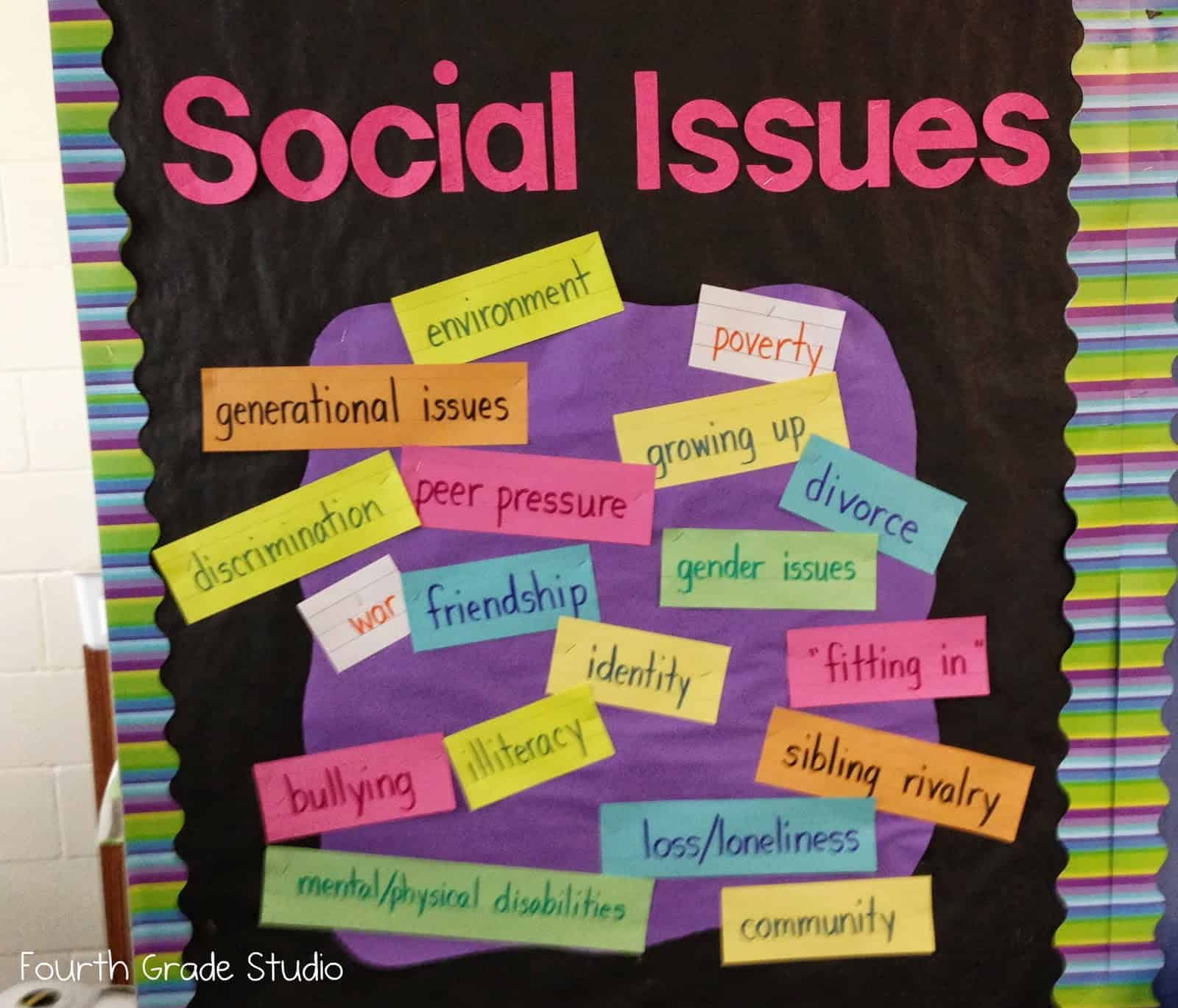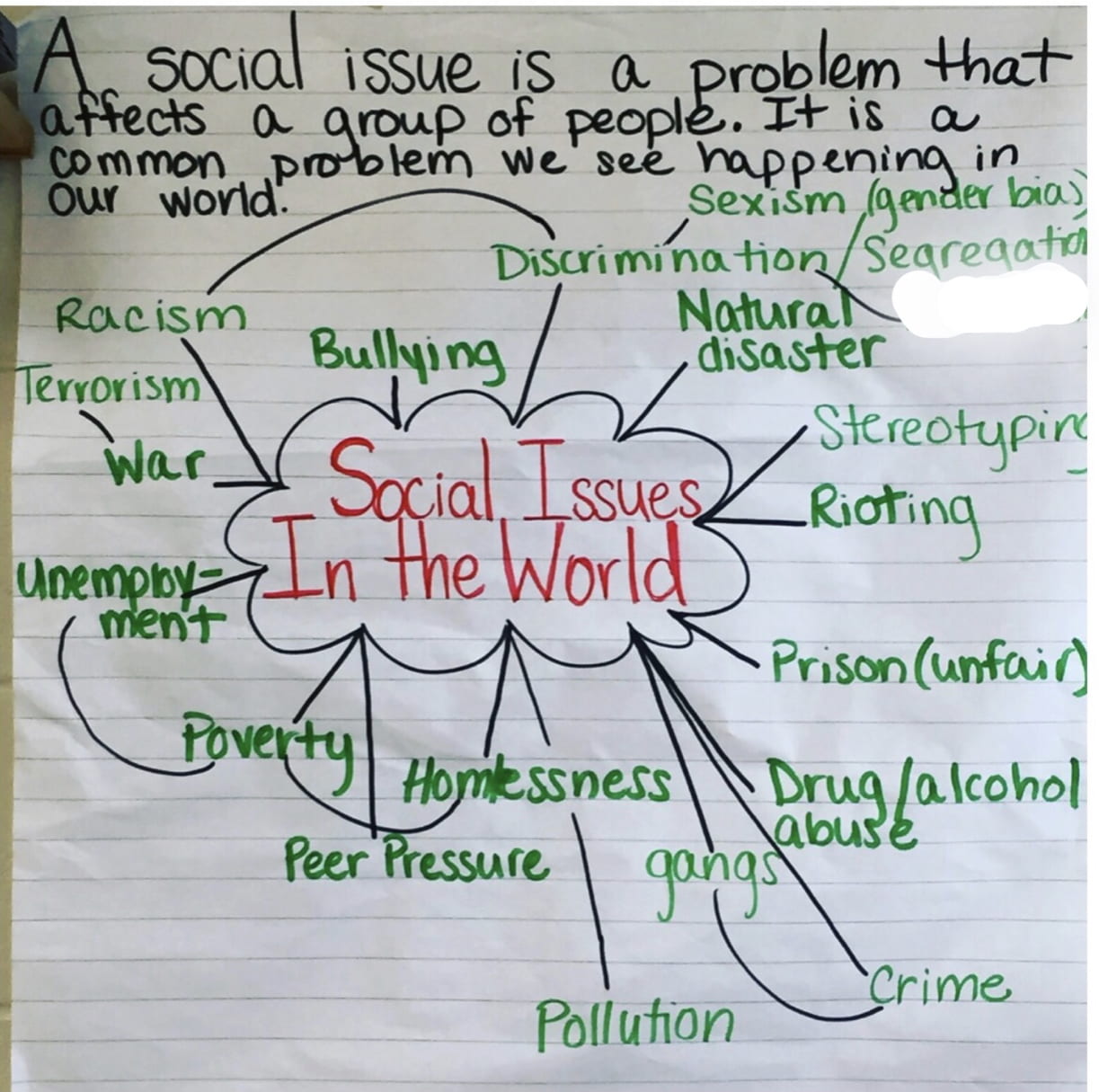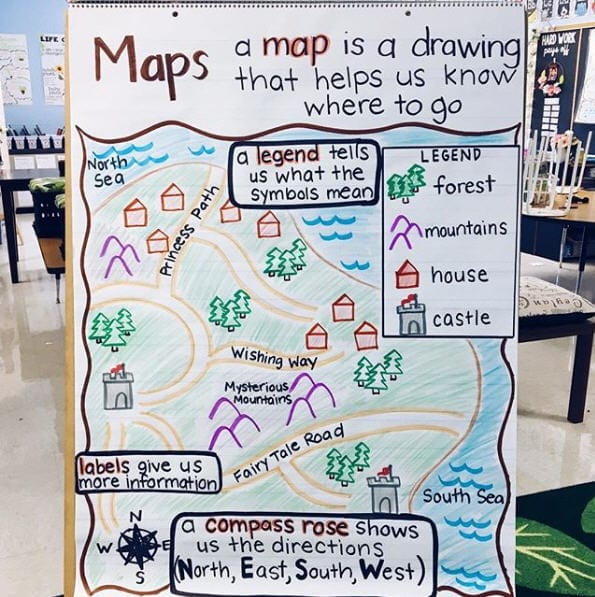



Learning Intention:
We are learning to discuss whether social issues and different cultural groups are accurately represented in a fiction or nonfiction text.
Success Criteria:
I can:
- I understand what a social issue is, and I can find an example in the text.
- I understand what a ‘cultural group’ is, and I can find an example in the text.
- I can locate social issues and cultural groups in the text and compare how they have been represented in the text with my knowledge of the real world.
- I can confidently locate social issues and cultural groups in the text and discuss reasons why the author has represented them as such, when compared with my knowledge of the real world.
What are ‘social issues’?
A social issue is a problem that can influence or affect many citizens within a community or group.
What is a ‘cultural group’?
Culture is a pattern of behavior shared by a society or group of people. Many different things make up a society’s culture. These things include food, language, clothing, tools, music, arts, customs, beliefs and religion.
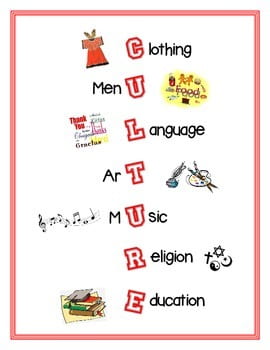

Activity:
- Read your Biographical text.
- Choose a different social issue or cultural group from the list you made in your Homework book.
| Social issues | Cultural groups |

Click here to view a larger picture of the above chart.
- Print off the proforma linked below or rule it up in your book and record your text evidence in the column. Don’t forget to include the page number of the book to indicate where you found your text evidence – (so your teachers can double check if necessary).
- Try and discuss one social issue or cultural group each day using the proforma below.
- Lastly, put yourself in the shoes of the author of your text and come up with reasons why the social issue or cultural group you identified today is/isn’t accurately represented in your text.
Click here to find this week’s Learning Task Proforma: Cultural group / Social issues Proforma
Work Sample: 
Click here for a bigger view of the work sample.

Our New Spelling Sound
Our new sound of the week is /or/ sound as in ‘fork’. The sound /or/ can be represented by more than one spelling. /or/ could be <a> <aw> <our> <oar> <au> <oor> <ar> <ore> <ough> <augh>
| Hall
Brawl Popcorn Sauce Award Doormat Bought
|
Appalling
Withdraw Scorching Dinosaur Reward Snore Nought
|
Sleepwalker
Sprawl Assortment Marauding Thwart Carnivore Fraught
|
Spelling Task
# Write out spelling words twice (x2)
# Put ALL spelling words into categories based on spelling of focus sound (like we do at school, using different spelling of focus sound)
Tuesday Writing Skill Task
Learning intention:
We are learning to write descriptive sentences using alliteration, a form of figurative language.
We can:
- Write a descriptive sentence using alliteration
- Modify words in a previous draft with synonyms
- Carefully select vocabulary to make sense in each example
- Experiment with Figurative Language
Today’s Activity: Alliteration – an undervalued form of figurative language.
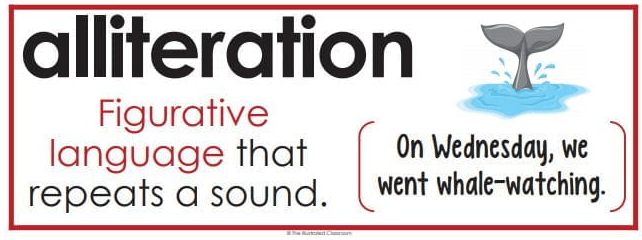
Alliteration is a form of figurative language that repeats the same sound. It is typically the initial or first sound of the word. Newspapers employ this form of figurative language to form catchy news headlines, as they require ‘punch’ using a limited number of words.
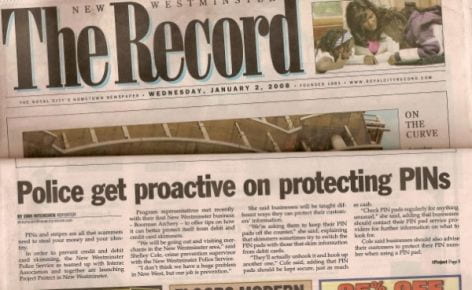

But alliteration really became popular after a book called Animalia was released in 1996 by Greame Base. He used alliteration to create one of the most famous alphabet books of all time.
LAZY LIONS LOUNGING IN THE LOCAL LIBRARY

DIABOLICAL DRAGONS DAINTILY DEVOURING DELICIOUS DELICACIES

You will notice that not every word must begin using the focus sound of the alliteration.
Now it’s time to have a go. Pick a sound and give it a try.
You may like to have a few drafts or attempts of your alliteration sentence, to edit or improve it with synonyms. Similar to yesterdays task, don’t erase previous drafts – use them to build-up a better example. If you rub out writing, you may forget what you had there!
Similar to the news headlines, you might like to think of an alliteration for each of these National Geographic Wildlife Comedy Award photographs…?
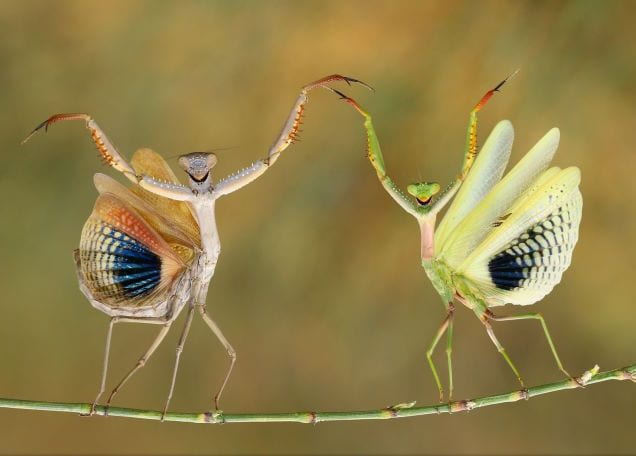

CHALLENGE TASK = Write a lipogram
A lipogram is a sentence which deliberately avoids using a specific letter of the alphabet and it is very hard, because:
# the vocabulary used must be carefully selected
# the sentence still needs to make sense
Here’s an example of a lipogram that avoids using the letter – d
A whale is a large marine mammal that lives in the ocean and eats fish or plankton.
FOR AN ADDED CHALLENGE:
# Avoid using a vowel letter, instead of a consonant
# Avoid using 2 different consonants at the same time.
# Write a lipogram paragraph.

 Rainbow Write your counting pattern:
Rainbow Write your counting pattern:
Eg. 3 6 9 12 18 21
Today’s Warm up game: Gipps National Park.
Click the Link here or google: “Gipps National Park game”
Or Find the grade 4/5 section on SplashMaths and click on the Make a Walking Track link. (This says it is tablet friendly.)
*Please note it may not work when you open it due to java links. Try googling on safari if on an ipad. If neither works, move onto the main activity.
Learning Intention:
We are learning to read a map using grid coordinates.
Success Criteria: At the end of this lesson you can:
- Learn to read grid references
- Practise identifying points on a map using grid references.
- Practise identifying points on a graph (quadrant) using grid references
Choose your level:
Grade 4/5 Grid References Worksheet
Grade 5/6 Cartesian Plane Worksheet
Now try it on a real map grid. Check out this activity here.
*Remember all these can be completed on seesaw by downloading or screen shot of the worksheet. Click + add work, then find the upload cloud and upload the photo or document and write over the top 😊

Finish off your Wannon Water Poster Competition –
